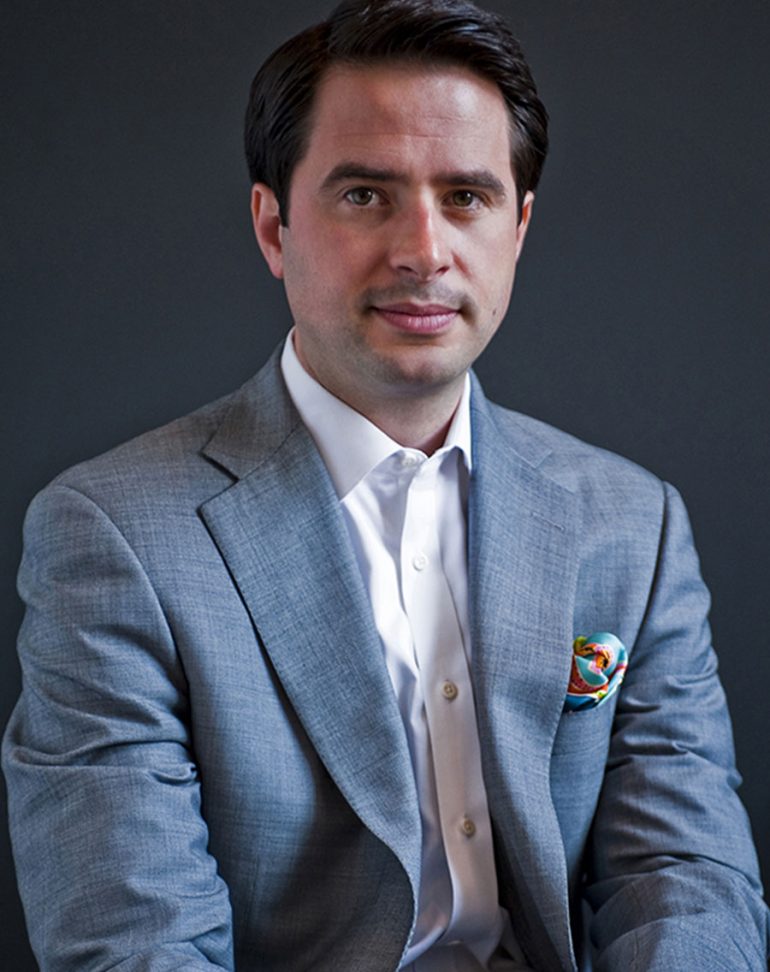Behind every brand delivering a great experience is a leader who recognizes the value of keeping things simple. In Simplifiers, Margaret Molloy, our Global CMO, interviews business leaders who put simplicity to work.
In this Simplifiers interview, Margaret speaks with Clayton Ruebensaal, SVP, Global Brand Management & Design, American Express.
MM: What does your brand stand for?
CR: American Express stands for reciprocal relationships.
We’ve always been a relationship-based business. To add modern relevance to this timeless idea, we will demonstrate that our relationship with our customers is an even exchange of value—it’s reciprocal.
MM: What role does simplicity play in delivering on that promise?
CR: Simplicity plays a significant role in getting this done. As a strategy team, we ruthlessly prune our strategic plan down to its simplest form, ensuring it fits on a single page. Only by being simple and clear will people understand our strategy and act on it.
MM: How does your organization strive to create simple experiences?
CR: Every big company struggles with complexity. We’ve simplified by creating one unifying idea for everything we do. This idea of relationships guides the way we treat our employees, develop products and services, and communicate with our customers. We believe that when our customers thrive, so do we.
MM: What benefits has American Express experienced from simplifying?
CR: The biggest benefit we’ve seen as a result of simplifying is the fact that our customers believe, “I’m with American Express and they have my back. This relationship I have with them is the reason I’m happy to pay for their products and services.” The fact that we have our customers’ backs allows them to go about their business and live their lives.
Simplicity is the key to doing good marketing in the modern world.
MM: How do you strive to keep things simple for your marketing team?
CR: Simplicity is the key to doing good marketing in the modern world. The change in the last 20 years for everyone, but especially for marketers, has been dramatic. The only way to be effective today is to have a simple strategy.
I do a few things to maintain simplicity in my marketing organization. One is I make sure our strategy around American Express’s brand is clear. We’re in the relationship business and bring everything back to that point. We’re constantly aware that when our customer thrives, so do we.
Additionally, as a leader, I push each person on my team to have one goal. This can feel risky; it’s a lot easier to have seven goals. But having the clarity of everyone on the team knowing each other’s goal allows the team to support each other effectively.
MM: What’s the most recent simple customer experience that inspired you?
CR: I use USAA for my insurance. They do something simple that I find hugely useful—they pick up the phone. Chances are that if you’re calling an insurance company, you actually need them. So the fact that USAA makes it easy to find their phone number, picks up right away and are friendly on the phone means the world to someone in need of help. It’s a simple thing, but it goes far in delivering on their promise.
CR: Not focusing on what makes a brand special. Everything else is a distraction.
MM: What do c-level executives need to do to operationalize simplicity?
CR: A senior executive’s job is to be ruthless about prioritization. They should trim back everything that’s not going to help their company achieve its core objectives.
MM: What are the key indicators that simplicity is driving your business?
CR: Look at companies who are successful. How many are complex and how many simple? A trite but great example is Apple. Steve Jobs wanted to create something so simple that it didn’t require an instruction manual. This simple idea grew Apple to success. Simplicity sells and is worth its weight in gold when it comes to achieving business results.
MM: What does simplicity mean to you?
CR: Clarity.
MM: What top piece of advice would you give to other brand leaders trying to simplify?
CR: Start with yourself. Are you a simple communicator? Are your ideas and documents simple? The more we simplify what we do internally, the better chance it has of being understood externally—both with business partners and customers.
MM: Thank you.
This is this an ongoing Simplifiers series. See interviews with EVP and Group President at Verizon Wireless Ronan Dunne, Director of Strategy and Innovation at Cofra Holding Ltd, former CEO of C&A China, Lawrence Brenninkmeyer; CMO at The Recording Academy, Evan Greene; CMO at Mary Kay, Sheryl Adkins-Green; Head of Marketing at Home Centre, Rohit Singh Bhatia; SVP, CMO of Aflac, Gail Galuppo; SVP and CMO at Cambia Health Solutions, Carol Kruse, Managing Director of The Nature Conservancy, Geof Rochester, Chief Strategy and Innovation Officer of Motorola Solutions, Eduardo Conrado, EVP; SVP, Chief Marketing & External Affairs Officer at Abbott, Elaine Leavenworth, GE CMO, Linda Boff; McLaren Automotive Head of Brand Marketing, Stephen Lambert; Ascension Chief Marketing and Communications Officer, Nick Ragone; Hertz CMO, Matt Jauchius; Direct Line Group Marketing Director, Mark Evans; McDonald’s CMO, Deborah Wahl; Jet.com President, Liza Landsman and VP Marketing, Sumaiya Balbale; Target CMO, Jeff Jones; Spotify CMO, Seth Farbman; Ally Financial CMO, Andrea Riley; Gannett CMO, Andy Yost; CVS Health CMO, Norman De Greve; Dunkin’ Brands CMO, John Costello; Zappos CEO, Tony Hsieh; Southwest Airlines CMO, Kevin Krone; and Google CMO, Lorraine Twohill.
Know a simplifier or would like to be included in the series? Please recommend an executive for my next interview: [email protected]
Margaret Molloy is Global CMO and head of business development at Siegel+Gale. Follow her on Twitter: @MargaretMolloy and Instagram:@MargaretMMolloy


